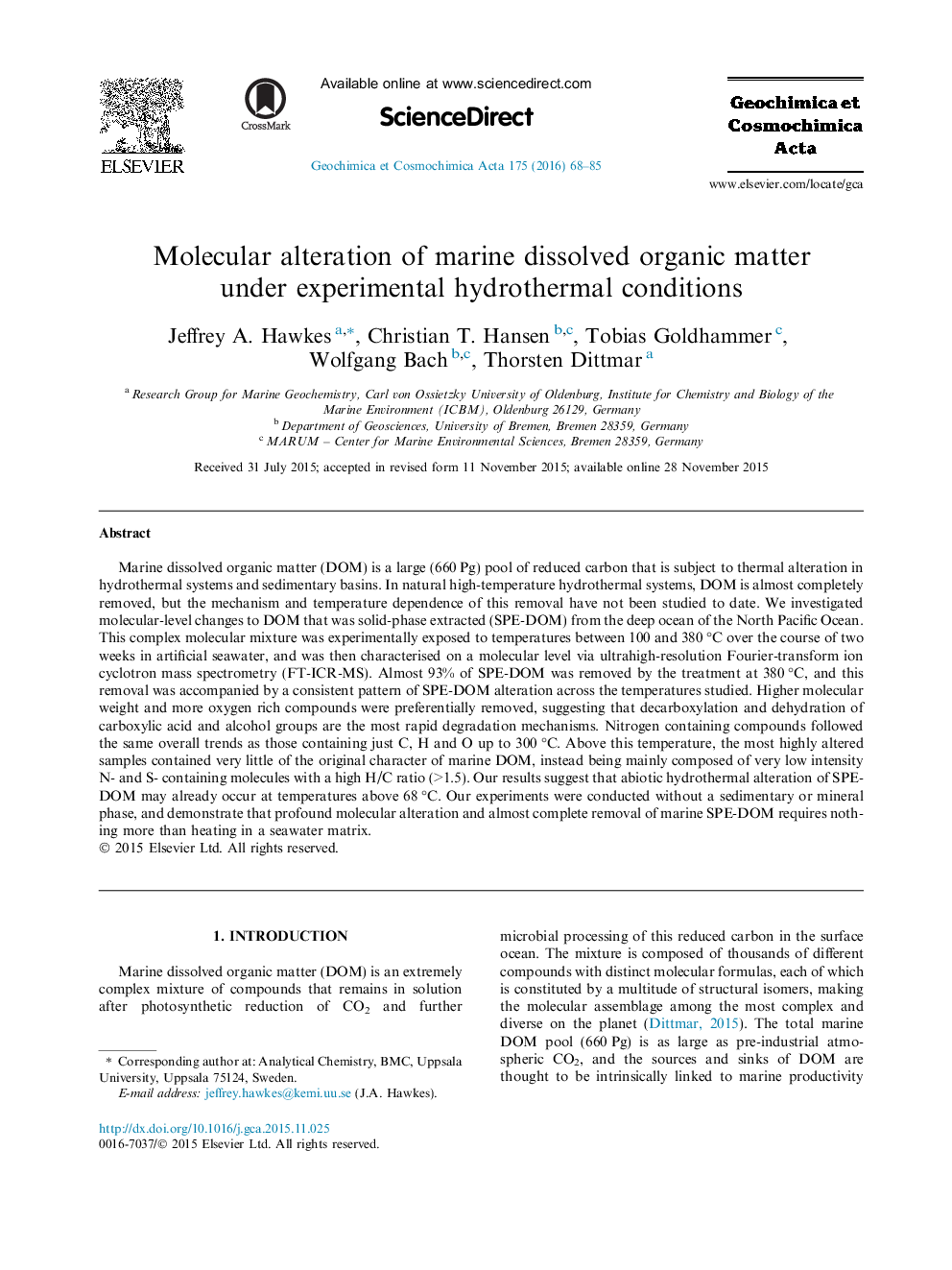| Article ID | Journal | Published Year | Pages | File Type |
|---|---|---|---|---|
| 6437457 | Geochimica et Cosmochimica Acta | 2016 | 18 Pages |
Marine dissolved organic matter (DOM) is a large (660 Pg) pool of reduced carbon that is subject to thermal alteration in hydrothermal systems and sedimentary basins. In natural high-temperature hydrothermal systems, DOM is almost completely removed, but the mechanism and temperature dependence of this removal have not been studied to date. We investigated molecular-level changes to DOM that was solid-phase extracted (SPE-DOM) from the deep ocean of the North Pacific Ocean. This complex molecular mixture was experimentally exposed to temperatures between 100 and 380 °C over the course of two weeks in artificial seawater, and was then characterised on a molecular level via ultrahigh-resolution Fourier-transform ion cyclotron mass spectrometry (FT-ICR-MS). Almost 93% of SPE-DOM was removed by the treatment at 380 °C, and this removal was accompanied by a consistent pattern of SPE-DOM alteration across the temperatures studied. Higher molecular weight and more oxygen rich compounds were preferentially removed, suggesting that decarboxylation and dehydration of carboxylic acid and alcohol groups are the most rapid degradation mechanisms. Nitrogen containing compounds followed the same overall trends as those containing just C, H and O up to 300 °C. Above this temperature, the most highly altered samples contained very little of the original character of marine DOM, instead being mainly composed of very low intensity N- and S- containing molecules with a high H/C ratio (>1.5). Our results suggest that abiotic hydrothermal alteration of SPE-DOM may already occur at temperatures above 68 °C. Our experiments were conducted without a sedimentary or mineral phase, and demonstrate that profound molecular alteration and almost complete removal of marine SPE-DOM requires nothing more than heating in a seawater matrix.
